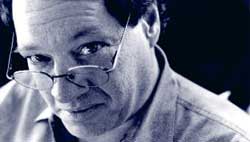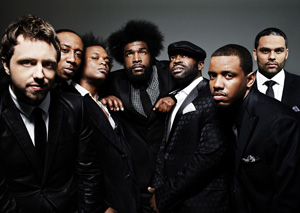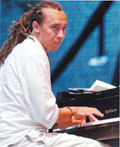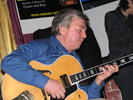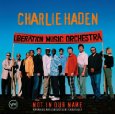Any trip to New Orleans without at least one night at Snug Harbor on teemng Frenchman Street is incomplete. A recent trip to the Crescent City on a NEA Jazz Masters Live site visit for the Contemporary Arts Center’s presentation of the great Phil Woods’ musical realization of A.A. Milne’s poetry, yielded one such splendid evening. Eagerly heading towards a de rigeur plate of fried oysters at the funky Irish pub Parasols just up the street from our old crib on Constance, rental car radio happily blasting WWOZ, who should stop by the radio station to assist their pledge drive but Jason Moran! Hmmm, this is interesting, what brings Moran to NOLA, I asked myself. Of course… he was in town to teach for a week at the Monk Institute’s grad program at Loyola. But more to the point of my visit, he was playing that evening at Snug.
A quick call to friend & colleague Jason Patterson, who runs Snug, and I was on my way over to hoist a glass of red with Jason and his lovely wife Sylvia, joined at the bar by the tireless New Orleans scenester/writer Geraldine Wycoff. Not only was Jason Moran playing Snug that evening, but he was doing so in the esteemed company of New Orleans finest drummer, Herlin Riley! Soon fellow radio heads Scott Bourne and T.R. Johnson of WWOZ showed up and it was clear Snug was the place to be.
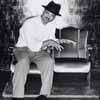
This proved to be a classic evening of spontaneous invention/mutual admiration between two very distinctive and original artists. No matter how freely and furiously they improvised — and with Jason Moran things can get knotty with a quickness — they always found home, either through some finely-wrought melody, blues theme or irrisistable rhythm seemingly plucked out of thin air by either or both. The ever-inventive and intuitive Riley employed hands-on-heads, brushes, and myriad permutations of those tight New Orleans rolls he’s patented.

Moran, an ancient-futurist to be sure, and noted old soul despite his boyish appearance, came equipped with one of the many ancient samples he employs as improvisational launching pads; this time it was a historic Bert Williams recording that he used as a springboard to advanced improvisation, bringing along Riley treading confidently and comfortably into the unknown, steeped in New Orleans antiquity himself.
They played a beautiful "Thelonious" which they de-assembled down to the bare Monk essence. Later they seamlessly morphed Moran’s improvisation on "Planet Rock" to "Moon River"! Invention was on full display for this excellent evening at Snug!

